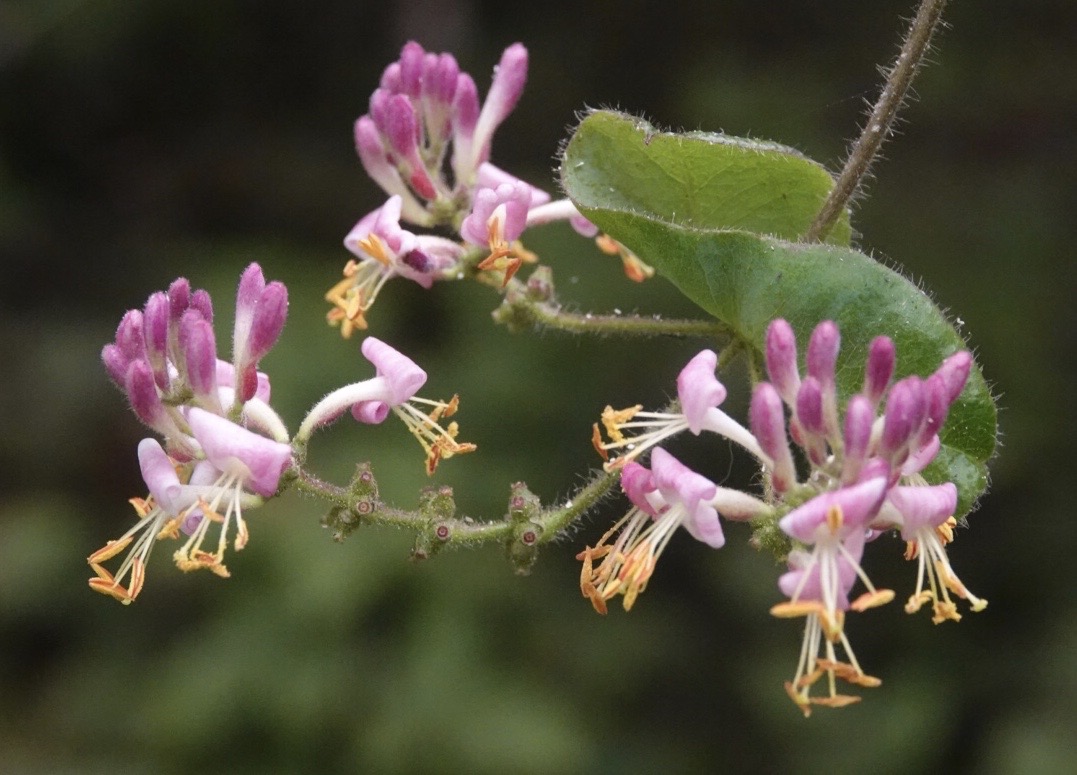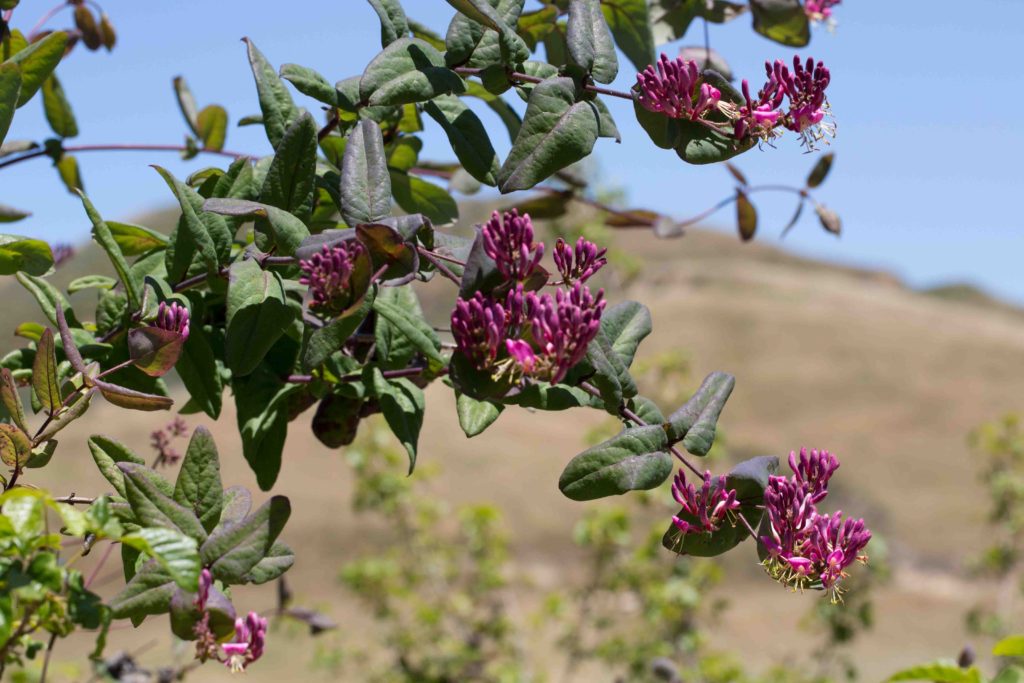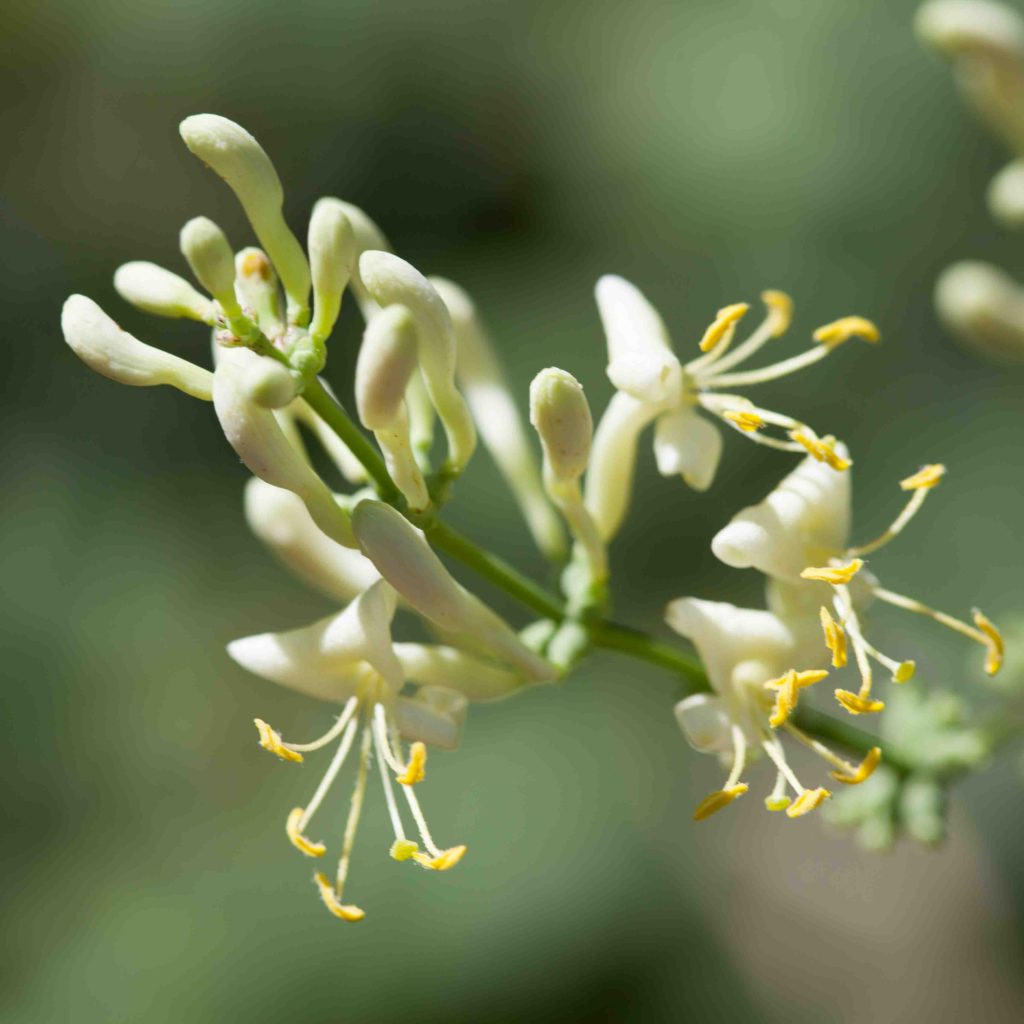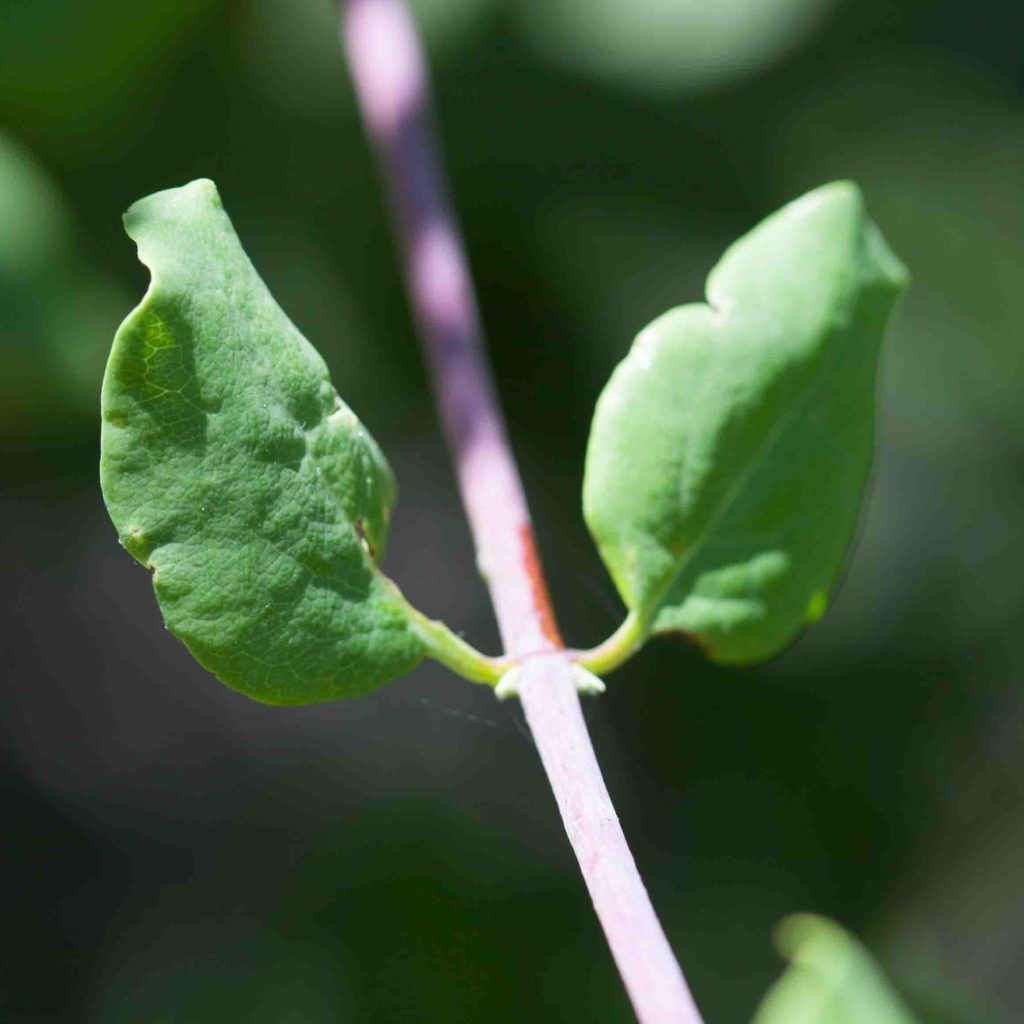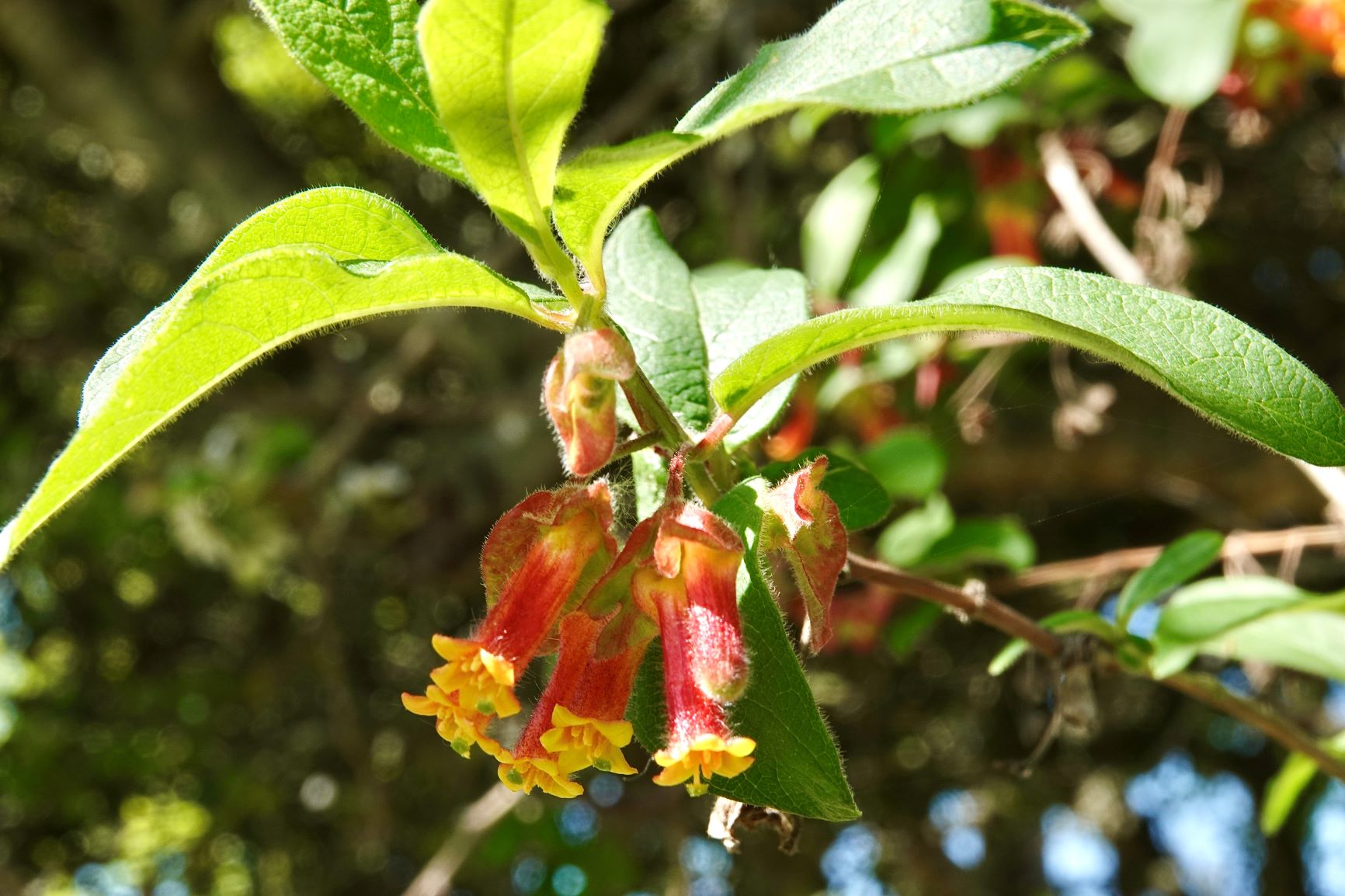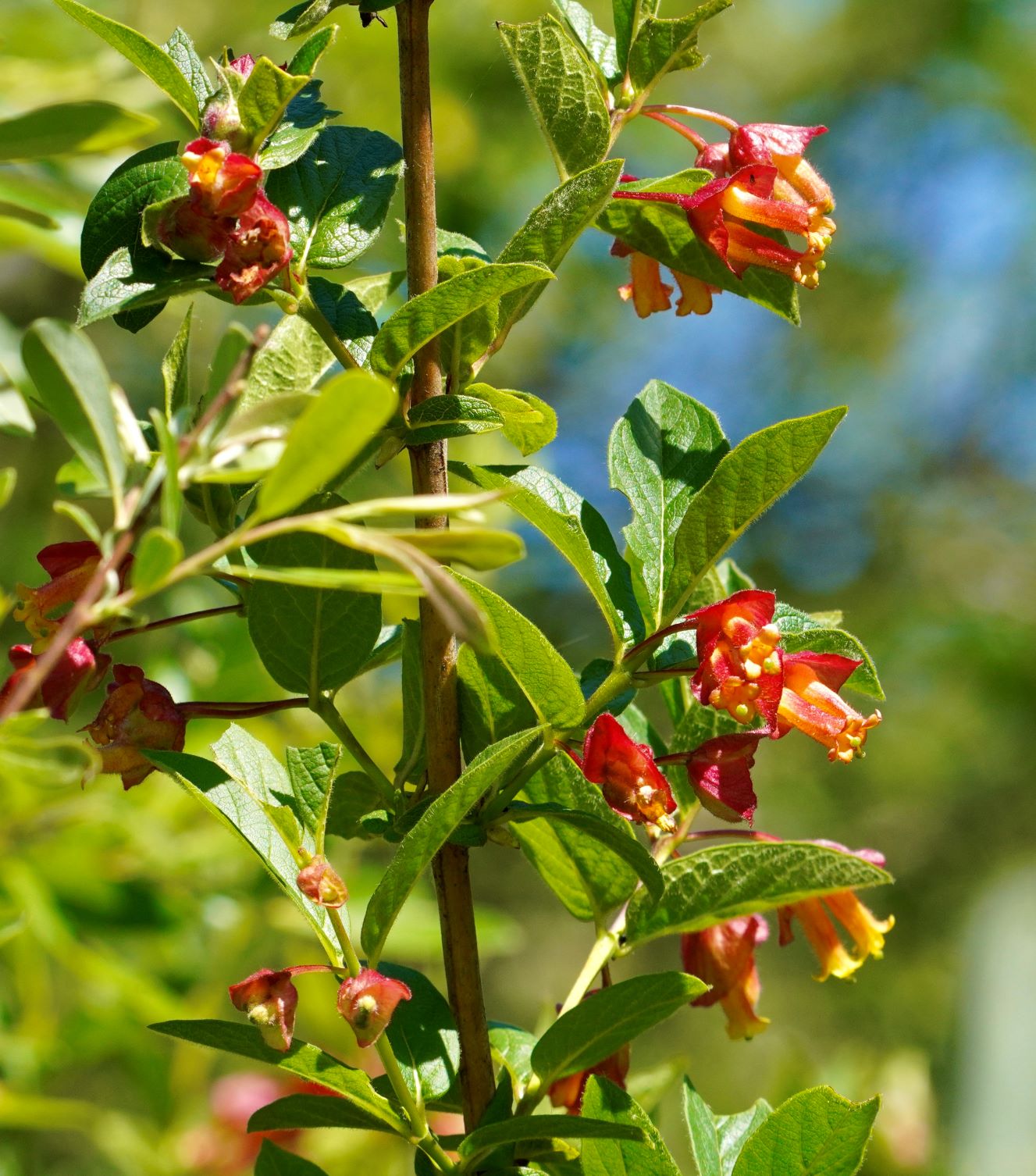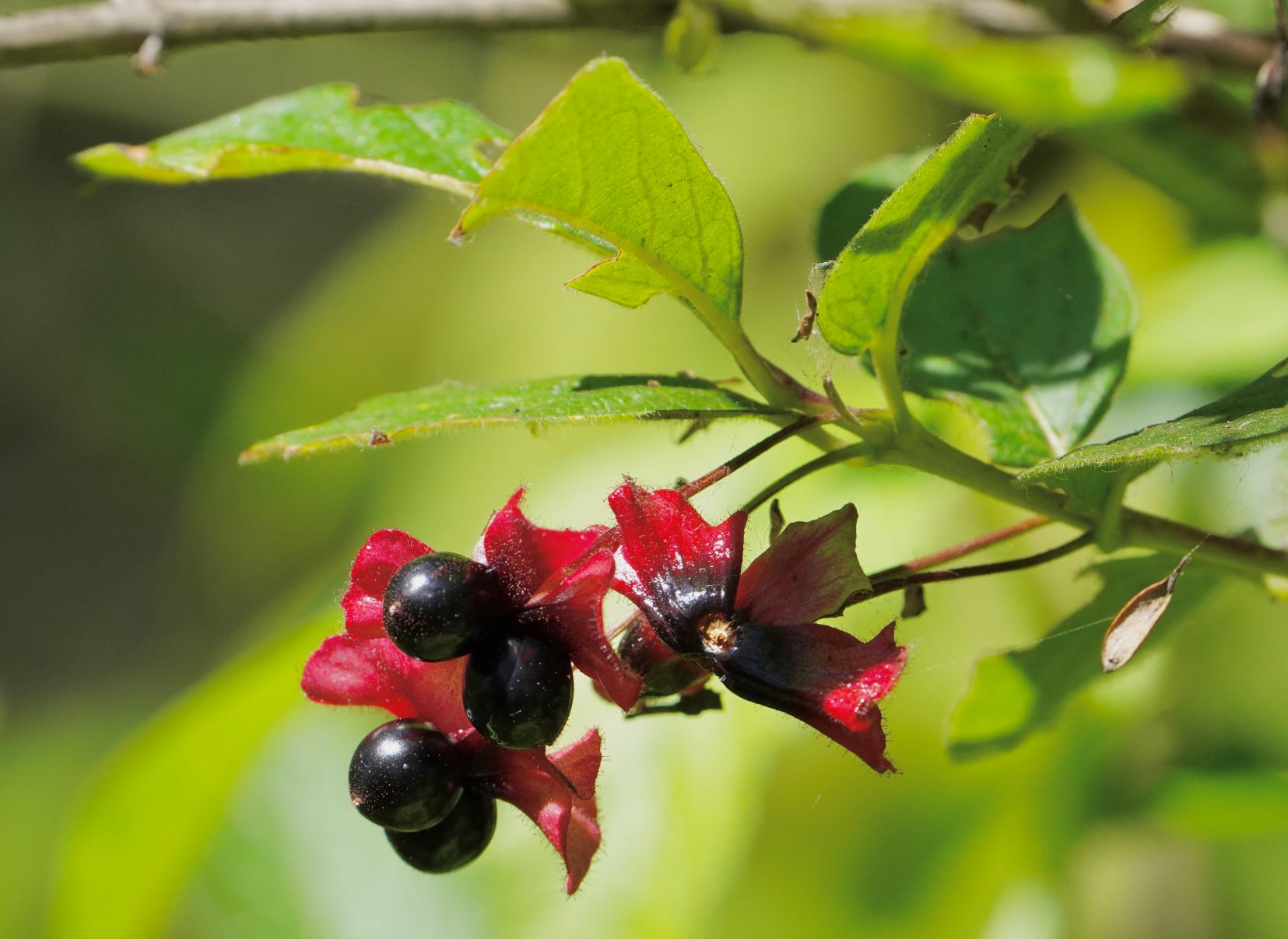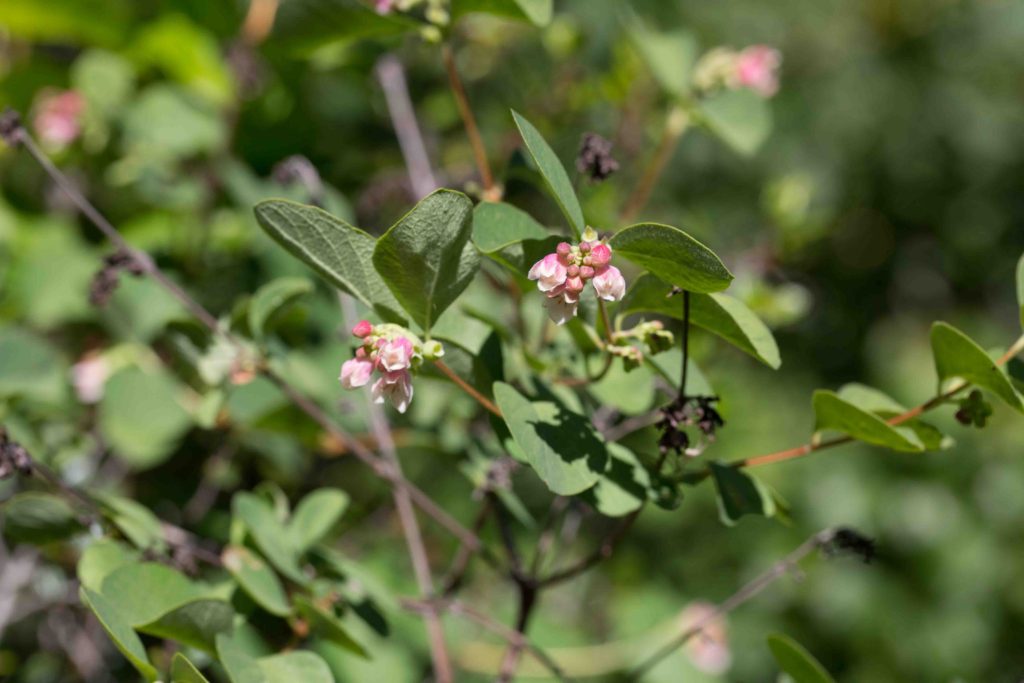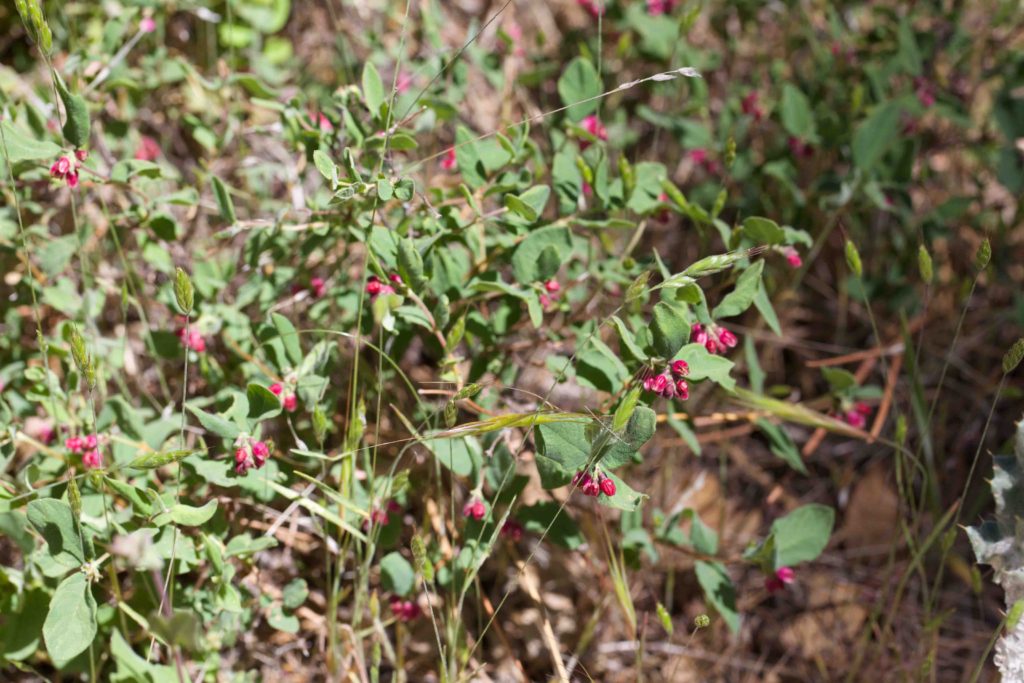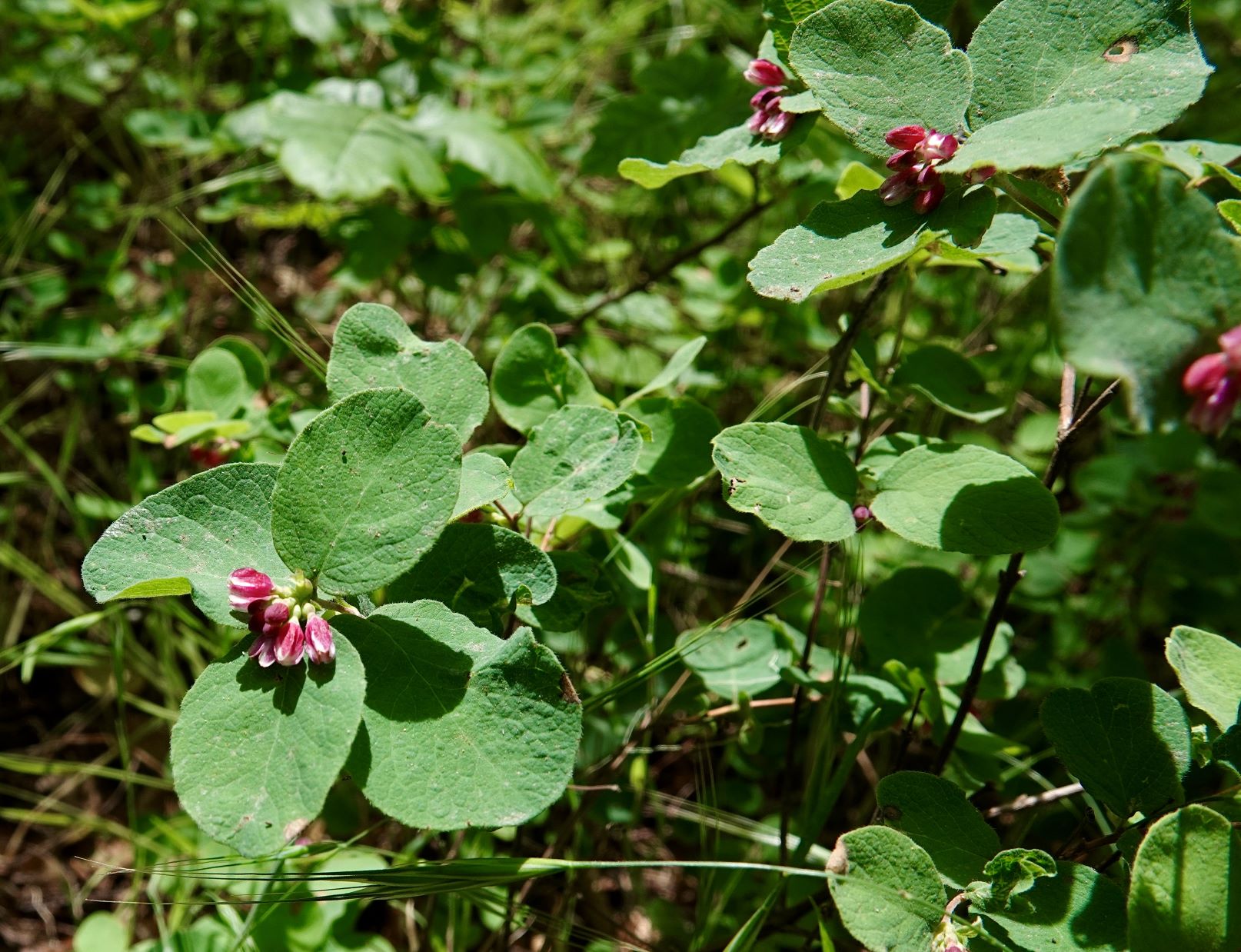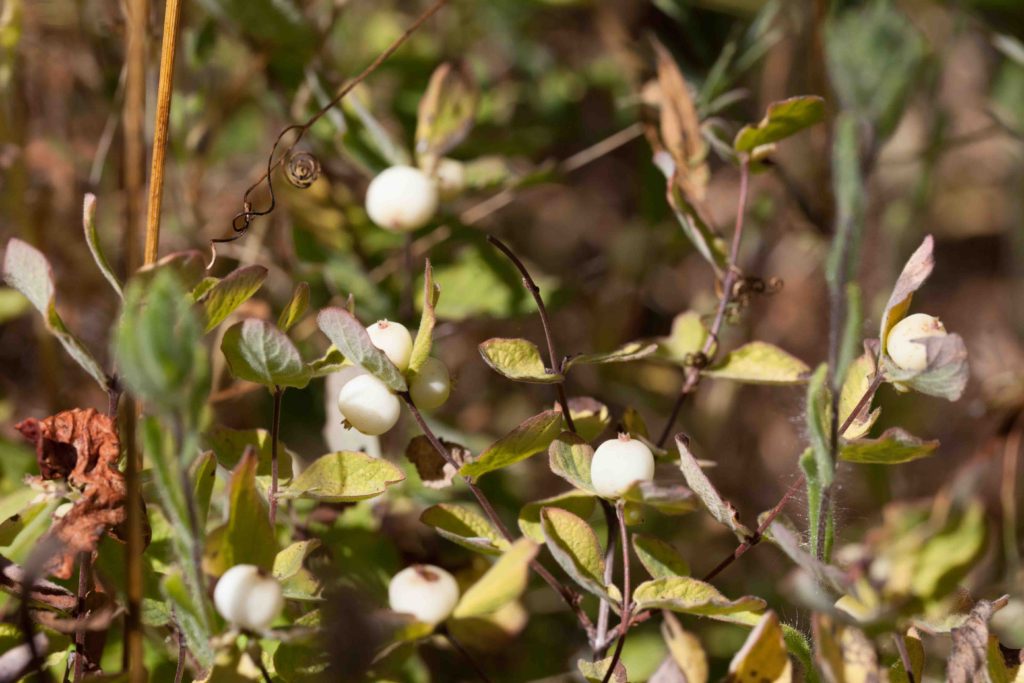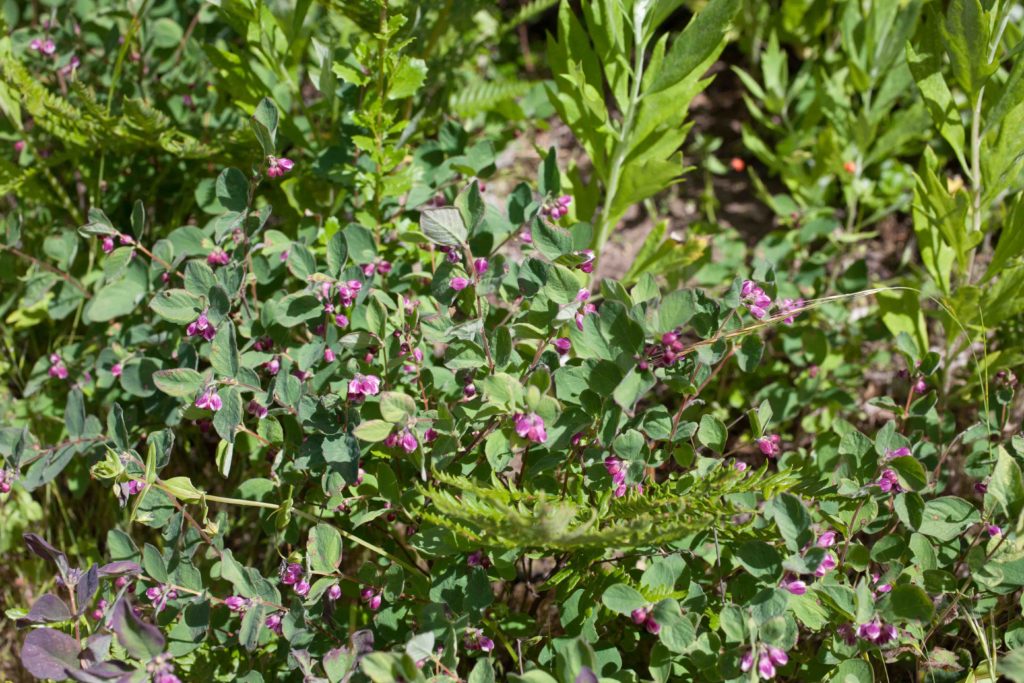Caprifoliaceae: Honeysuckle Family
Hairy Honeysuckle – Lonicera hispidula
Blooms:
Apr–July
Plant Height:
Stem up to 6 m
Flower Size:
Medium
Origin:
Native
Habitat:
Along streams, wooded and dry slopes & ridges
Notes:
A common shrub with long climbing and twining branches, this has pink flowers, which make bright red berries in late summer to fall. The hairiness in the plant’s name reflects the hairs on the flowers, while the leaves may be either hairy or glabrous. The upper leaves are fused around the stem, the lower leaves have prominent leaf-like stipules. Photo #2 by CJH.
Chaparral Honeysuckle – Lonicera interrupta
Blooms:
Apr–May
Plant Height:
Stems 30 cm
Flower Size:
Small-medium
Origin:
Native
Habitat:
Dry slopes & ridges
Notes:
Much less common than Hairy Honeysuckle (Lonicera hispidula, see above). This shrub has climbing to sprawling branches and yellow flowers. It is almost hairless, and lacks stipules on the lower leaves. The upper 1–3 pairs of leaves are fused around the stem. Fruits are similar to Hairy Honeysuckle, clear red berries about 1 cm in diameter, ripening in late summer to fall.
Black Twinberry – Lonicera involucrata var. ledebourii
Blooms:
Apr–June
Plant Height:
0.6–3 m
Flower Size:
Medium
Origin:
Native
Habitat:
Moist areas near coast
Notes:
An erect, large shrub with distinctive paired tubular flowers, reddish-orange with flared yellow tips. Each flower has a persistent orange-red, leaf-like bract. When the black berries have formed, the bracts become enlarged and turn deep red or purple, forming an attractive collar below the fruits. The leaves are glandular, opposite and sparsely hairy, elliptic to ovate in shape. Photos by CJH.
Common Snowberry – Symphoricarpos albus var. laevigatus
Blooms:
May–July
Plant Height:
60–180 cm
Flower Size:
Small clusters
Origin:
Native
Habitat:
Shaded canyons & slopes
Notes:
This is a common, straggly shrub with clusters of 8–16 inconspicuous, pink, bell-shaped flowers. They form small, white, poisonous berries, which remain on the bush throughout much of the following winter. The inside of the berries resembles snow, providing an extra justification for the common name. Leaves are elliptic to round.
Creeping Snowberry – Symphoricarpos mollis
Blooms:
Apr–May
Plant Height:
15–60 cm
Flower Size:
Small clusters
Origin:
Native
Habitat:
Open woods & brush
Notes:
Leaves and flowers are very similar to Common Snowberry (Symphoricarpos albus, see above). The flowers are in smaller clusters, with only 2–8 flowers, and the whole plant has a lower, more sprawling growth habit. Photo #2 by CJH.

